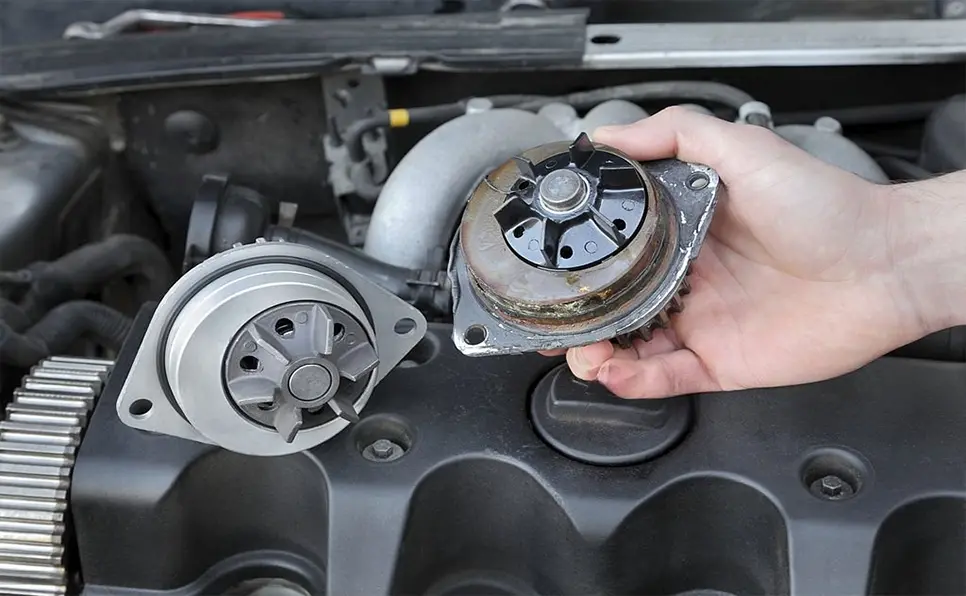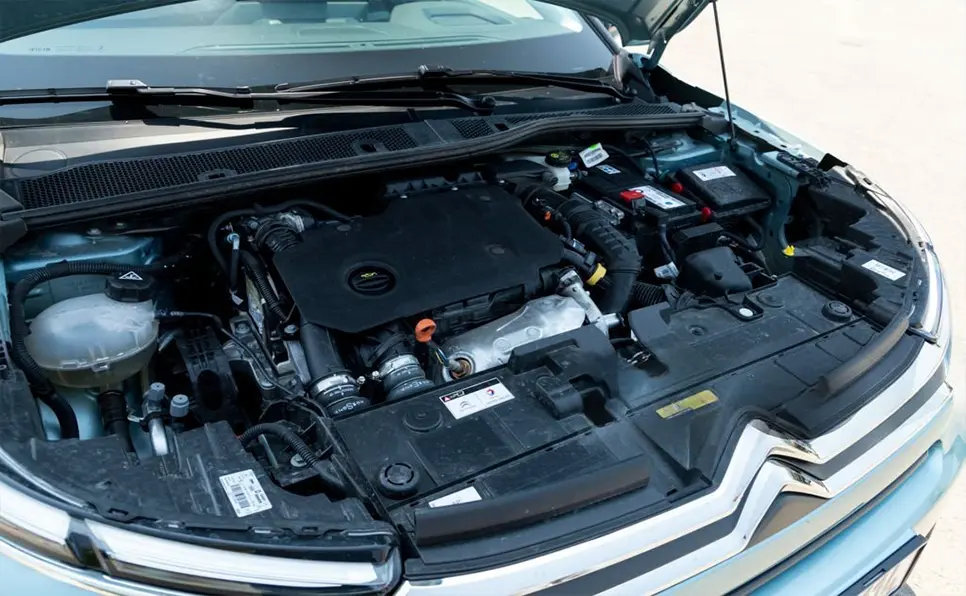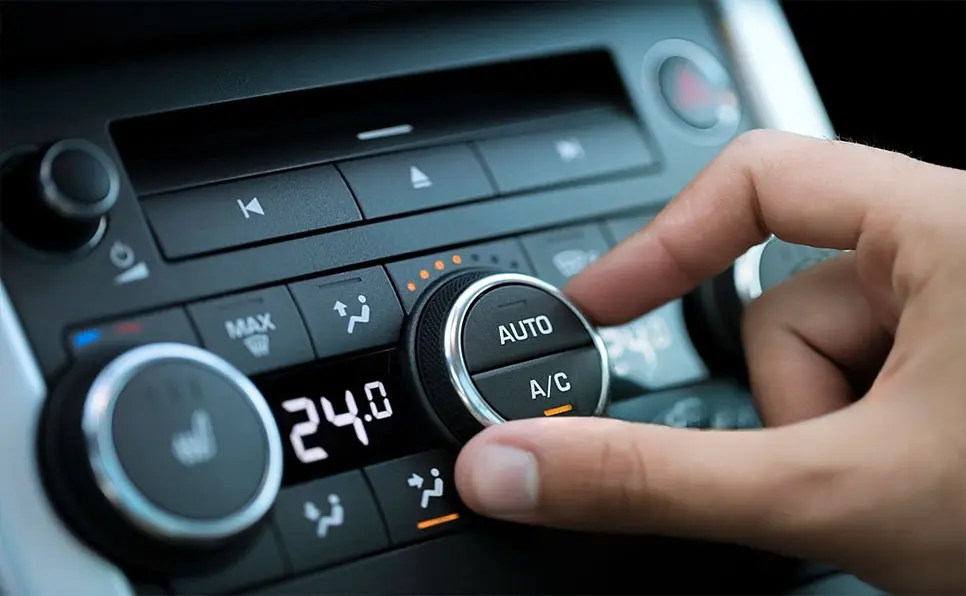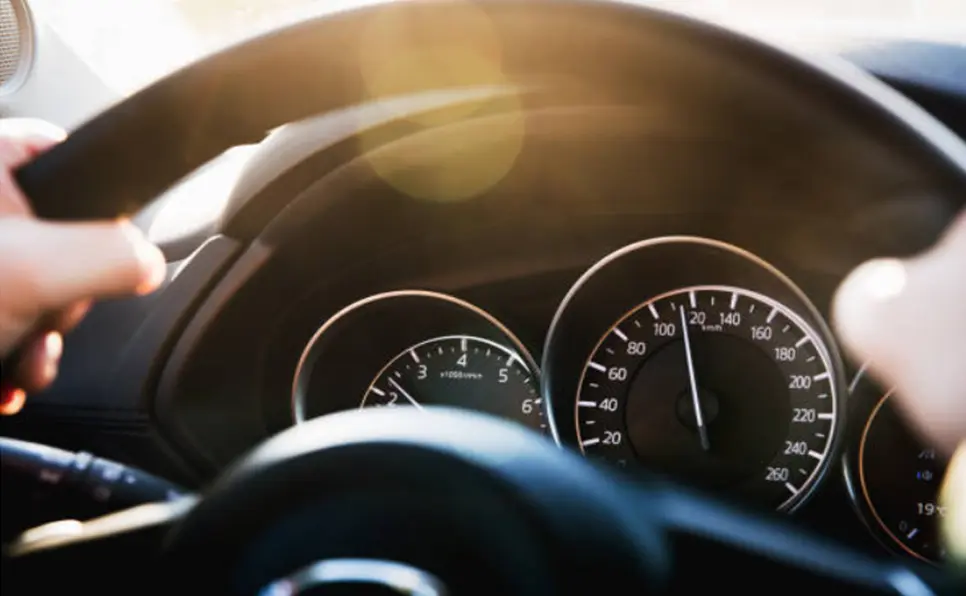
The engine water pump plays a vital role in cooling the engine and maintaining its temperature. It is part of the cooling cycle. Without it, the engine cannot operate properly. The pump circulates coolant within the engine and through the water hoses, transporting it to the radiator to cool it. The process then repeats itself.
The water pump does not pump coolant at high pressure; rather, it works more like a fluid to ensure engine cooling. Like all engine parts, the water pump has a specific lifespan and operating conditions. After a period of use, it must be replaced.
Symptoms of a Damaged Water Pump
The water pump in a car engine wears out over time, and some symptoms appear on the car engine. However, not all symptoms indicate a damaged pump, as some symptoms can overlap with other problems. Therefore, the engine should be thoroughly inspected and the following symptoms should be checked:
A persistently high engine temperature, even with short use and from the start of the engine
A high engine temperature is a common symptom of a damaged water pump. However, it is impossible to be certain that the pump is damaged simply by this symptom, as another part of the engine may be causing the high temperature. Therefore, the engine should be thoroughly inspected and ensure that it is free of any water leaks or bubbles inside the radiator. Also, do not forget to check the fans and the condition of the radiator, both inside and out.
A high engine temperature, which then drops significantly while driving the car
If the engine temperature rises significantly and rapidly, and the temperature drops while driving the car, especially at medium and high speeds, the water pump is most likely damaged, but partially, not completely. Therefore, it should be replaced with a new one.
Weak Water Flow in the Coolant Tank or Radiator
The coolant flow in the coolant tank or radiator can be checked visually. If you find a difference in flow rate compared to another car of the same make and model year, and you ensure the quality and integrity of the cooling system, connections, and engine head gasket, you can determine that the pump is damaged or has begun to fail.
Causes of Engine Water Pump Failure
The water pump has a specific lifespan, after which it must be replaced. The pump will not simply fail unless there are certain factors that accelerate the process of failure, such as:
Using Plain Water
Using plain water to cool the engine instead of the coolant recommended by the manufacturer is one of the main causes of damage and corrosion of the water pump blades. The mineral salts and sulfur dissolved in plain water cause rust and internal corrosion of the pump.
Using regular water causes significant damage to the engine as a whole, not just the pump. It offers no advantage that would make it a good choice for replacing coolant. Furthermore, regular water leaks from the engine cannot be detected because it is transparent, unlike coolant.
An important point to note is the need to choose the correct coolant recommended by the manufacturer, as there are many inferior brands that are not significantly different from regular water.
Neglecting the Water Pump and Not Replacing It After Its Lifespan
Many car owners believe that as long as the engine’s internal components are working, there is no need to replace them, even if they have exceeded their lifespan. This is a fatal mistake that will later cause many problems and additional expenses. This also applies to the water pump, which is now replaced with the timing belt.
The pump is replaced with a new one approximately every 100,000 kilometers. If you keep the pump after replacing the timing belt, it will fail, even if you use the original coolant and adhere to all ideal operating conditions. This is simply because the pump is designed for a specific number of operating hours, and after that, its performance is no longer guaranteed.
Poor Manufacturing
A common cause of water pump failure is poor manufacturing. To avoid this problem, you should ensure you purchase high-quality, original parts and avoid counterfeit parts. Don’t be fooled by the low price, as you’ll lose many times that price if you use a counterfeit part of unknown origin.
Auto manufacturers recommend replacing the water pump when replacing the timing belt, even if it’s in good condition, and not waiting until it fails. This is to avoid further engine problems caused by poor cooling.









